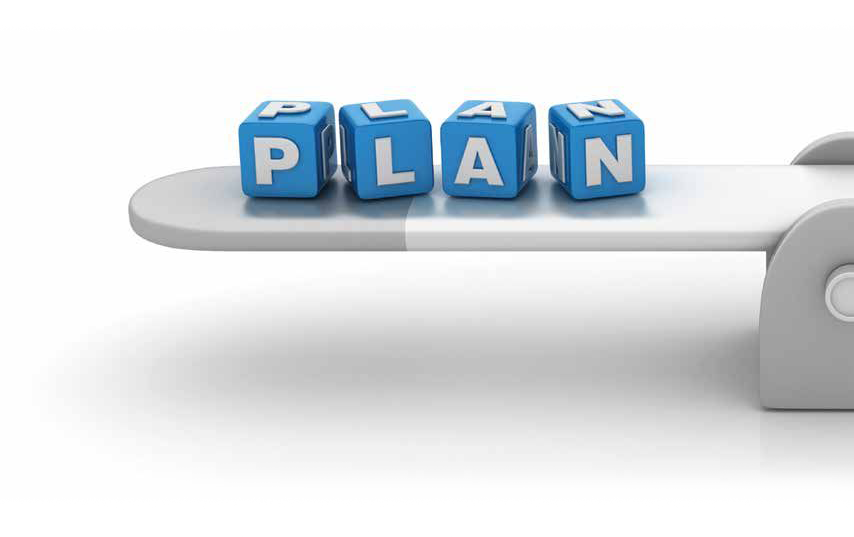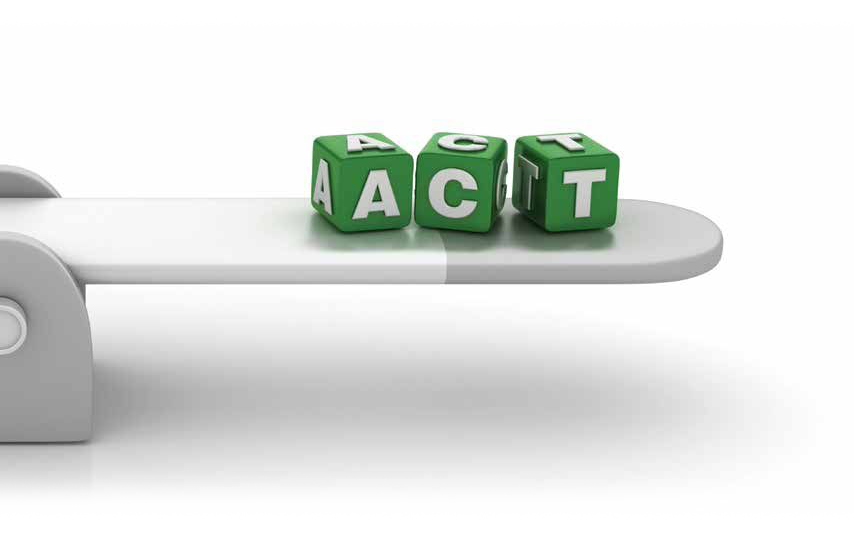What would happen if your salespeople started thinking more strategically instead of purely reactively? Based on four decades of observation and first-hand research, most sellers in electrical wholesaling operate in a reactive environment. A customer faces issues, the seller reacts to those issues and business is generated. Then the cycle repeats. What's more, the major difference between a new seller and an experienced one is the number of customer problems placed before them and the number of problems they can react to each day.

I don't suggest the complete abandonment of the reactive selling approach. It does work, but there are some breakdowns to consider. Let's explore the current situation and then the breakdowns followed by a few steps to move the needle toward the proactive side.
The current situation
The best and most successful salespeople in our industry are very busy. After hundreds of interviews with these folks, a story emerges that carries a few common threads. First, they have long-standing customers who trust them and look to them for assistance in solving issues. One seller from the electrical distribution industry commented, "When I first started, I had plenty of time on my hands. I spent some of it prospecting and lots of it just driving around. After a few years, my customers somehow discovered that I would work for them. Now, I barely have time for anything except responding to their requests."
Second, distributor sellers allow customer issues to completely control their schedule. Constantly responding to customer situations puts salespeople into a routine, which often translates into poor planning. They find themselves zigzagging across their territories and wasting a great deal of time commuting. Furthermore, many exhausted salespeople pass up important sales activities.
Breakdowns in a purely reactive system
As the reactive model gains traction, sales results build while breakdowns occur. For example, new product launches are poorly handled, company-wide customer seminars are not promoted, prospecting for new customer contacts (even in existing accounts) is neglected and setting joint calls with supply-partner teams becomes difficult at best. Urgent activities overtake the strategically important need for future development. When significant planning does not take place, salespeople miss important growth opportunities as they hustle off to their next customer "emergency."

The most common symptom emerges as a result of the breakdown in the ability to launch new product technologies. Here's an anecdotal story to support this theory:
One of our clients had decided to expand its purely electrical product offering by taking on one of the leading pneumatic suppliers. The expansion made sense as many customers employ a mix of technologies in their projects. But there was a breakdown. Their two very best sellers never seemed to gain traction with the new products.
A deep dive into the situation revealed their customers used pneumatic products. Many of the buying decisions were made by a different set of contacts within their customer base. While the sellers knew these people and often sat in meetings with them, no real sales effort was applied. Digging deeper, it was discovered the pneumatics buyers were surprised at the level of inventory and support available through the distributor. It was only through independent work done by a product specialist that any level of product awareness came about.
Sadly, the often-repeated story above is not the only breakdown. Another comes in the form of bandwidth issues. Simply stated, there is only so much response time in a day, week or year. At some point, the bandwidth runs out. This results in sellers prematurely plateauing in their ability to drive sales further. In the case of sellers blessed with a double dose of the puritanical work ethic, they hit the wall with burnout conditions that manifest as health issues or simple dropout. I can name a half dozen salespeople who, at the pinnacle of their career, just decided to do something else.
Skipping from the experienced sellers to the newest members of the sales team, the reactionary model presents even greater issues. The newbie comes on board with a very little structured sales process. In place of real training, most distributors send the new guy out with one of the aforementioned senior sales guys to "learn the ropes" of selling. Since they prescribe the reactionary sales model, the rookie seller learns nothing about prospecting, prioritizing or targeting customers; much less about managing a calendar. New territories languish for a couple of years while the new salesperson thrashes around in search of somebody, anybody, willing to let them demonstrate their willingness to solve problems.
Hiring experienced salespeople from other territories does nothing to help the situation. Since the reactive mode is customer dependent, a journeyman seller hired from the competition can only perform well when he/she continues to serve the same customer set. This can present legal issues in many states.
Can we apply strategy to a reactive model?
While I would like to suggest a complete 180-degree change in the reactive model, experience indicates such changes are better received when delivered in small increments. For the sake of argument, let's assume the reactive model will always be part of our equation and focus on setting a strategic plan to ensure the effort provides a better return on our efforts.
I am totally convinced that inserting some strategic thought will drive more informed decisions about where to focus their reactive efforts. Customers are the key focus of any business model, so let's begin with a customer-centric discussion and work from there.
What do you know about our customers?
Nowadays, everyone claims to be some type of "solution seller." Do you know enough about the customer's specific environment to suggest something without being asked? Do you know the answers to these questions:
-
What precisely does the customer do to generate profits?
-
Is the customer independently owned or part of a larger corporation?
-
What is the burdened cost of labor for your customer's workers?
-
Is it easy or difficult for your customers to find employees with the right skills?
-
What is the cost of energy for the customer's facility?
-
Does the customer have a corporate mandate to reduce their carbon footprint?
-
Which portions of the customer's business are mission-critical?
-
Are there bottlenecks in the process or service provided by the customer?
-
Does the customer have waste or reworks and how is this measured?
-
Who are your customer's best customers?
Sometimes, it's not what you know, it's who you know
One often-heard complaint from sales managers could be paraphrased thusly: My salespeople don't call on the list of buying influences of their best customers. The list includes top-level management, project managers, production leaders, safety managers and in the case of OEM customers—the customer sales manager.
I am constantly pulled into situations where distributors lost considerable existing business or opportunities to grow their sales because they had no early warning of shifts in the customer direction. The problem was their best contacts were not privy to strategic direction. Increasing the number of people with which you interact is both an offensive and defensive maneuver. Gathering information from them will both drive sales in a positive direction and protect the work already done.
What is your value to the customer?
If the only answer you can come up with is good service, it's time to think more deeply about the subject. I believe all value is driven by eight points:
-
Reduction of internal labor
-
Reduction in services required from others
-
Expense reduction—hopefully not in the form of price cutting
-
Reduction of assets required
-
Increases in revenue
-
Improvement in market position: Can you make the customer's product more appealing to their customers?
-
Improvement of safety/workplace: OSHA regulations and infractions are expensive
-
Enhancement of company culture
Apart from the company culture enhancement, all these value drivers help your customers make more money. Here's a war story on the company culture thing:
Early in my career, I had a customer in the flour blending business. Basically, their product was commercial-sized bakery mixes like what you might buy in a Betty Crocker cake mix. They were a small company competing in a world of giants. In a short conversation, the owner told me he wanted his company to look and be as modern as technology would allow. This was part of his vision for the company's culture. Over the next few years, we provided computerized man-machine interfaces throughout the plant. The payback was sometimes questionable, but driving that vision to employees was important enough to justify the spend.
Understanding the specifics of your value, allows for a better match between you and your customers.
How do your customers think about you?
Your approach with customers should depend on what the customer thinks of you and your company. Do they see you as a specialty provider, their main supplier, the guy with inventory they can call in a pinch or maybe the price guy? Your strategy with the customer depends on how they see you.
Let's illustrate. If you are the main supplier to the customer, you may be able to easily "muscle" a few small-fry distributors out of the way. Conversely, if you are viewed primarily as a specialty company, your work might center on demonstrating your ability to perform in other areas. If the customer only calls when they are in a pinch and need to take advantage of your inventory, you need to raise your prices.
All customers aren't created equally
How your customers view your company is part of the equation. Potential comes into play; so too does the ease of doing business. Because salespeople, regardless of their work ethic, have a limited amount of time, it makes sense to establish priorities. Potential must be weighed against the likelihood of our efforts manifesting themselves in new business. For instance, larger opportunities often come with a lower probability of success. How does this play into your strategy?
This is a balancing act. For a new salesperson trying to deliver results quickly, understanding many OEM sales require 12-18 months to come to fruition might be an important consideration. One very strategic senior seller once described the account base as an investment portfolio. This person balanced their portfolio of opportunities. Some were short-term investments with modest returns while others were viewed as longer term and higher risk investments.
Final thoughts on strategic thinking
I typically suggest applying a strategic plan to your biggest and best accounts. Gathering the right information, meeting the entire cast of characters, understanding the value you provide and attacking the right opportunities require time. Most sellers don't have the time required to apply a plan to every account. That's when focusing efforts via the creation of a target list comes into play.
Allow me one last thought. Sellers (and distributors) who invest the time to target accounts have proven to be 47% more likely to reach their financial goals. That's a big number.
